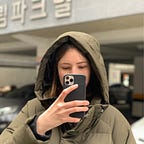Memory: Brainstorming
“Design an experience that externalises the nature of memory”
Group members 🤝: Maria Shuttleworth, Sylvester Liu, Max Hain, Rikkie Xiong
<<< Previous project found here: The Skin: Presentation time
During this two week project we were told to explore ways of representing the concept of memory — externalising the internal — and make use of two specific research methods:
- Artefact analysis
- Directed storytelling
We hopped on a call together and began discussing directions we could go in. Memory, being a very broad topic, presented many problems in terms of narrowing down our ideas — we ended our initial brainstorm with four potential topics:
- Misinformation & Memory gaps
- Involuntary memory
- The senses & memory
- Memory & identity
Artefact analysis.
To help us narrow down our four ideas, we played around with artefact analysis, exploring objects that we forget/misplace a lot (for me it was a pen), as well as objects that we are nostalgic about (a teddy). However, these didn’t really help us with picking a direction to go in so we decided to move on to the next research method…
Directed Storytelling.
Here is where it all started to kick off. I got on the phone with two of my friends and asked them to tell me about an event they remember from childhood. I asked interrogative questions about this memory, being very specific, asking about things that might have happened outside of their vision as well as within.
This needling lead both of them to start questioning themselves. If I was to simply ask them what happened, they’d retell the story with complete certainty. But as soon as I started asking questions like “what colour were your shoes?”, “who was with you when that happened?” and “what was the weather like at the time?”, they started fumbling, thinking harder, and deducing what they think probably happened based on my suggestions.
Presentation.
We presented two of our ideas to the class: The Senses & Memory, and Misinformation & Memory Gaps.
For the senses, we made four pairs of coloured glasses, and asked two volunteers to send us a few pictures they took recently. We asked them to tell us about the picture and what they remember about it, and then associate those emotions with a colour (e.g. happiness = yellow). After putting them on and looking at the picture again, we wanted to see if the filter of another colour that correlates with their emotion would do anything to their perception of the memory.
…Long story short it did not. After the feedback session we were told that this idea could potentially work in a much more controlled environment (e.g. where brain waves are monitored to more accurately measure a change of emotion), however we were not able to recreate this ourselves.
We then moved on to present our next idea: Misinformation & Memory gaps.
After I told the class the results of my directed storytelling, Sylvester presented another experiment he had done along the same lines.
He had put together a timeline of events and pictures from a trip to the Tate Modern with friends, but there was a catch: it was littered with misinformation, and the friends that went with him were asked about this timeline to see if they noticed any of it.
Although they did notice some, there was a bit that passed under their noses, giving us ideas as for what we could change for next time.
Based on these results, as well as the feedback from the group, we decided to focus on Misinformation & Memory Gaps, but perhaps focus on nostalgia and childhood memories as these memories are easier to alter.
Part 2 of this project in my next post: Memory: The Misinformation Comic>>>
References.
- Kutchma, T M., (2003) “The Effects of Room Color on Stress Perception: Red versus Green Environments,” Journal of Undergraduate Research at Minnesota State University, Mankato: Vol. 3 , Article 3.
- Loftus, E. and Hoffman, H., 1989. Misinformation and memory: The creation of new memories. Journal of Experimental Psychology: General, 118(1), pp.100–104.
- Peteranderl, S. and Oberauer, K. (2017) “Serial recall of colors: Two models of memory for serial order applied to continuous visual stimuli”, Memory & Cognition, 46(1), pp. 1–16. doi: 10.3758/s13421–017–0741–0.
- Seshadrinathan, K., Pappas, T., Safranek, R., Chen, J., Wang, Z., Sheikh, H. and Bovik, A., 2009. Image Quality Assessment. The Essential Guide to Image Processing, pp.553–595.
- Yaffe, G., 2007. Locke on Ideas of Identity and Diversity. The Cambridge Companion to Locke’s ‘Essay Concerning Human Understanding’, pp.192–230.
